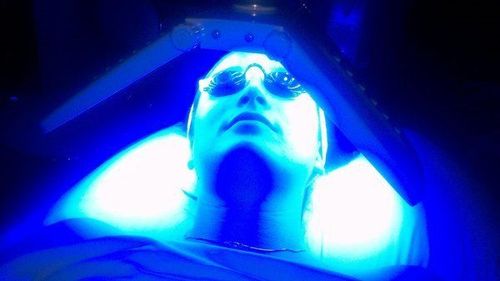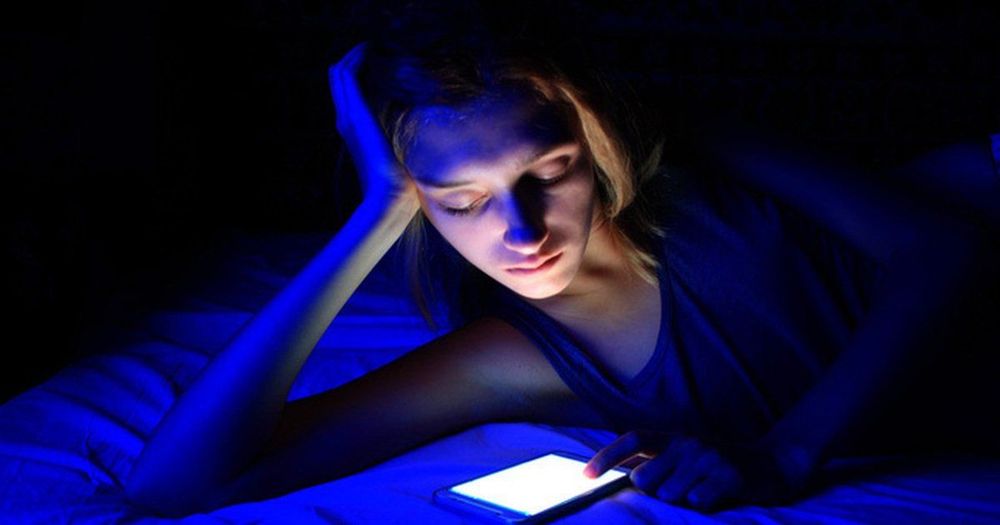This is an automatically translated article.
Blue light is part of the natural spectrum of electromagnetic energy. Every day people are exposed to a lot of blue light from the sun, from electronic devices and LED lights. Even so, many people still don't know what blue light is and whether blue light is good. The following article will show the effects of blue light on health.
1. What is blue light?
Every day people are exposed to a lot of blue light from the sun, from electronic devices and LED lights. Even so, many people still don't know what blue light is and whether blue light is good. Blue light is part of the natural spectrum of electromagnetic energy. Each color in the light spectrum has a different wavelength and energy level. Most waves are invisible, except for a small band of waves, called visible light. Visible light waves have wavelengths that vary from 380 nanometers (violet light) to 700 nanometers (red light). The longer the wave, the less energy is transmitted. In contrast, ultraviolet (UV) waves, which have the shortest wavelength, have the strongest energy.
Blue light has a shorter wavelength and higher energy than red and yellow light. Several studies have linked blue light with wavelengths between 415 and 455 nanometers and eye damage. And most light from LEDs used in smartphones, televisions and tablets has wavelengths between 400 and 490 nanometers.
The sun, fluorescent and incandescent bulbs all emit blue light. Today, people are exposed to more blue light than ever before due to the widespread use of devices based on light-emitting diode (LED) technology. Computer monitors, laptops, flat screen televisions, mobile phones and tablets all use LED technology with high amounts of blue light.
2. Uses of blue light
Exposure to blue light has several important health benefits.
Improves alertness: Exposure to blue light can increase reaction time and stimulate alertness when the body is not at peak performance times of the day. Enhances cognition, concentration and memory. Improve seasonal depression. Blue light therapy is now one of the popular treatments for the relief of seasonal depression. Researchers have found that it is also an effective treatment for seasonal depression, especially when combined with antidepressants. Improve acne. Blue light kills acne-causing bacteria and reduces inflammation in acne spots. Improve some skin problems. Active keratosis and plaque psoriasis are both improved by blue light treatment. Blue light therapy has also been effective in the treatment of basal cell carcinoma.

Ánh sáng xanh tiêu diệt vi khuẩn gây mụn và giảm viêm ở các nốt mụn
3. Harmful effects of blue light
Although blue light has beneficial effects, blue light causes eye problems such as blurred vision, eye strain, dry eyes, macular degeneration and cataracts. In addition, sleep disorders and mental health are also affected by blue light.
3.1. Blue light causes eye problems
Our eyes are equipped with structures that protect them from certain types of light. For example, the cornea and lens protect the retina - which is sensitive to light - from harmful UV rays. However, these structures do not protect the eyes from blue light.
Exposure to blue light from backlit digital screens and devices for long periods of time each day and at close distances causes digital eye strain , or computer vision syndrome, affects about 50% of computer users. Symptoms include dry eyes, eye pain or discomfort, eye irritation, and blurred vision. In addition, headaches and facial muscle pain caused by squinting are also common. Several studies have shown that when using computers, laptops and other digital devices, there is a tendency to blink less often, which means less humidity and pressure on the skin. eye. Blue light can also damage the retina. That is called phototoxicity. The extent of damage depends on the wavelength and duration of exposure. Animal studies show that even brief exposure (minutes to hours) can be harmful. Using a filter that cuts out 94% blue light has been shown to reduce retinal damage. Blue light can lead to permanent vision changes. Almost all blue light goes straight to the back of your retina. Several studies have shown that blue light triggers the release of toxic molecules in photoreceptors, increasing the risk of macular degeneration (AMD) - a disease of the retina. Macular degeneration (AMD) is the number one cause of vision loss in people over the age of 50. People with AMD can still see things in the periphery, but will lose the ability to see the center of their vision, and details and objects in the center will become blurred and invisible over time.
3.2. Blue light and sleep
The body's natural sleep-wake cycles are largely controlled by a sleep-inducing hormone called melatonin. Specialized photoreceptors in the eye can tell the difference between bright daylight (with intense blue light waves) and red tones (sunset) and send the information back to the brain. and promotes production of the body's natural reserve melatonin.
Use of electronic screens, especially at night, is associated with poor sleep quality. Blue light from electronic devices disrupts the circadian rhythm, also known as the sleep-wake cycle. In one study, just 2 hours of blue light exposure at night slowed or stopped the release of the sleep hormone melatonin. Powering off your digital device at least 3 hours before bed can help.
When blue light disrupts the sleep-wake cycle, other problems can also develop:
Increased risk of hormone-related cancers (such as breast and prostate cancer) Decreased blood levels leptin (a chemical that signals satiety after a meal) Changes in metabolism, especially blood sugar
3.3. Blue light and cancer
High exposure to blue light may increase the risk of certain cancers. One study found that people who work night shifts have a higher risk of breast, prostate and colorectal cancers.

Ánh sáng xanh từ các thiết bị điện tử làm rối loạn nhịp sinh học hay còn gọi là chu kỳ thức - ngủ
3.4. Blue light and children
Children if exposed to too much blue light can increase the risk of obesity, nearsightedness and problems focusing attention. At night, blue light can cause children's bodies to secrete melatonin more slowly than adults.
3.5. Blue light and mental health
High eye exposure to blue light at night has been linked to symptoms of depression. But during the day, exposure to blue light can have a positive effect. Therefore, blue light is used to treat seasonal affective disorder, or SAD. It is a type of depression that involves emotional changes with the seasons of the year. Research shows that 20 minutes of blue light exposure in the morning eases SAD symptoms.
4. How to Limit Blue Light Exposure
4.1. Practice the 20/20/20 strategy
When using any blue light emitting device, stop every 20 minutes to focus on objects about 20 feet away (approximately 0.6m) for 20 seconds before continuing to use the device .
4.2. Keep your eyes moist
Eye drops, such as artificial tears and room humidifiers are all good ways to keep your eyes from getting too dry and irritated from using blue light emitting devices.
4.3. Wear glasses as directed
Squinting in front of a screen for long periods of time is not recommended for overall eye health. If you wear prescription glasses to correct your vision, make sure you're wearing prescription glasses intended for the distance between your eyes and the screen - ideally an arm's length away. Most glasses are designed for longer distances.
4.4. Adjust the blue light on the screen
To reduce the risk of eyestrain and sleep disturbances, you can set the display to “night” with warmer tones. You can also buy screens that filter blue light when working at night. Filters can reduce glare on computer screens. Research shows that filter screens can block 30 to 60 percent of blue light, although it's unclear whether blocking blue light helps maintain sleep-wake cycles for people who regularly use electronic devices. before going to bed or not.
Blue light is part of the natural spectrum of electromagnetic energy. Each color in the light spectrum has a different wavelength and energy level. Therefore, they also have uses and can also be harmful to human health. Therefore, exposure to blue light should be weighed against the benefits and risks to ensure human health.
Follow Vinmec International General Hospital website to get more health, nutrition and beauty information to protect the health of yourself and your loved ones in your family.
Please dial HOTLINE for more information or register for an appointment HERE. Download MyVinmec app to make appointments faster and to manage your bookings easily.
References: healthline.com, webmd.com













